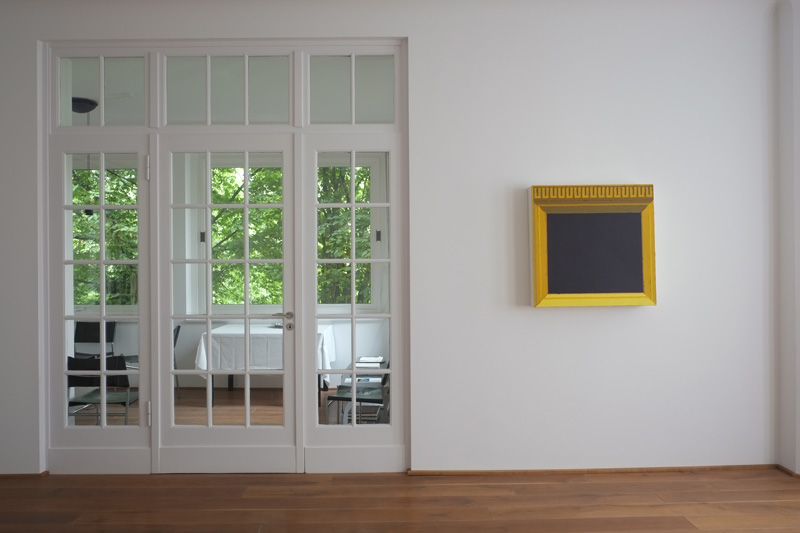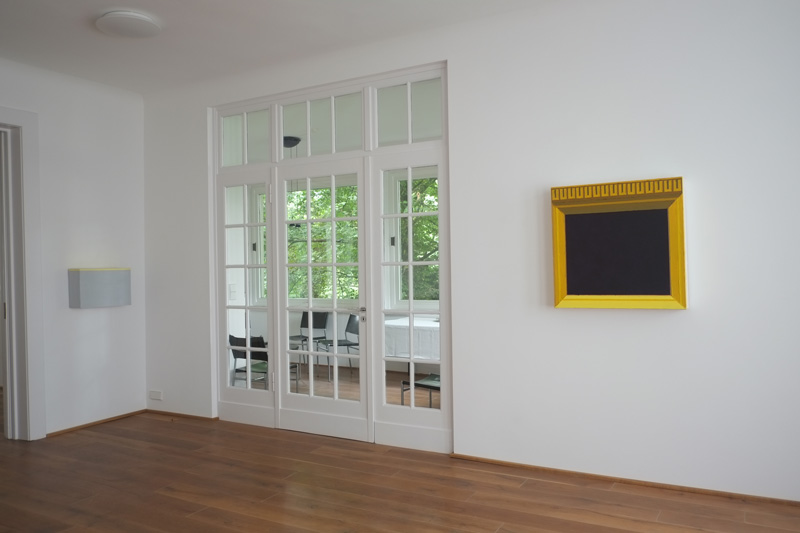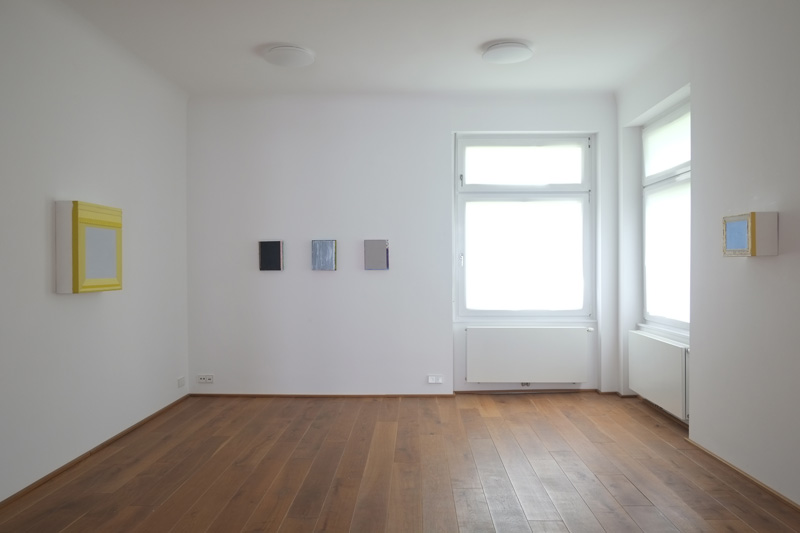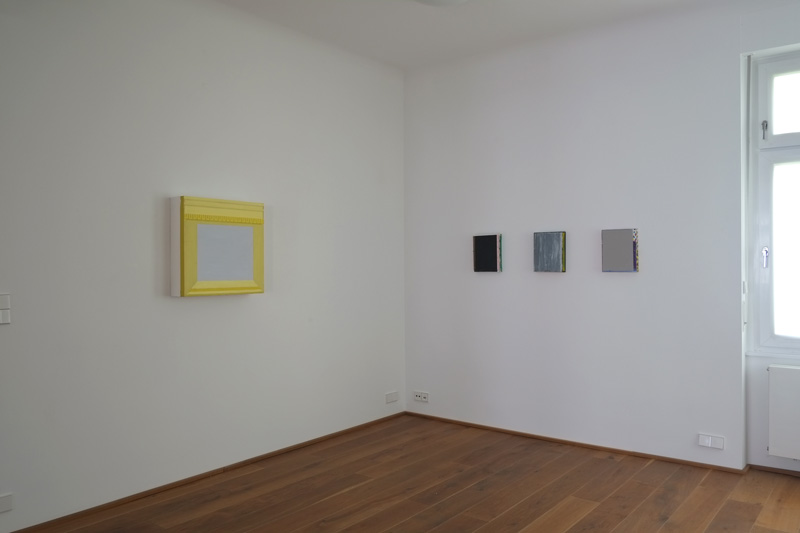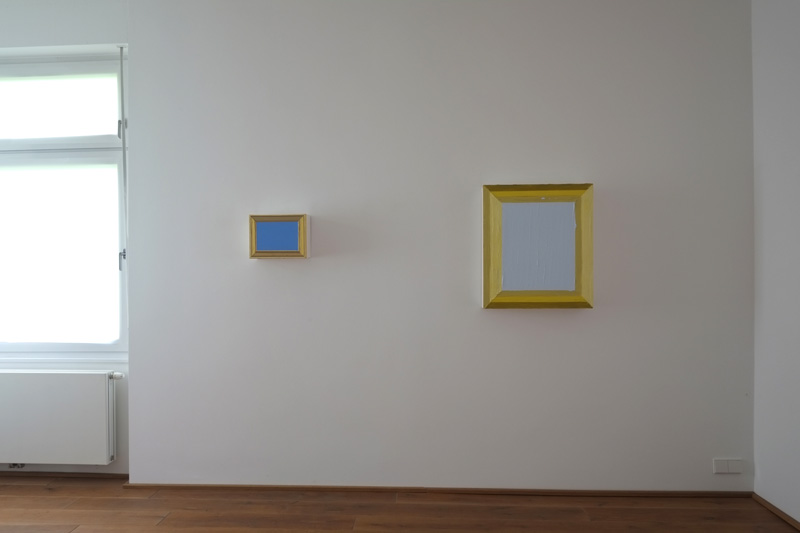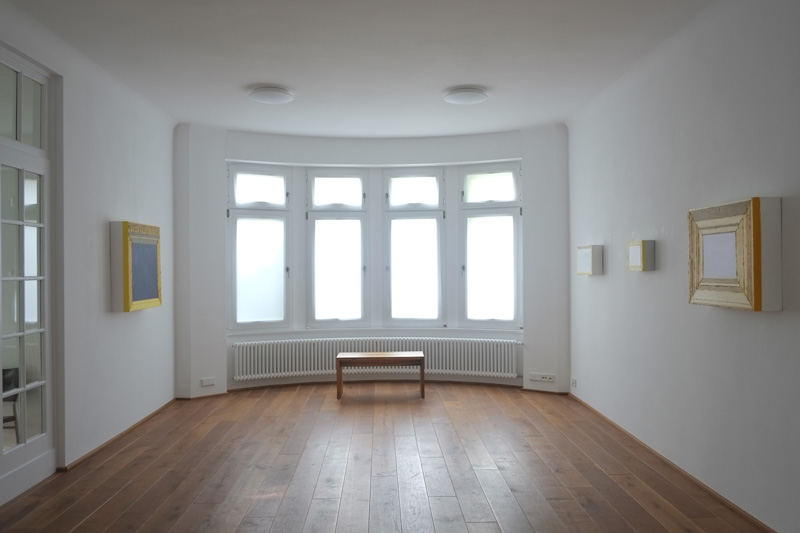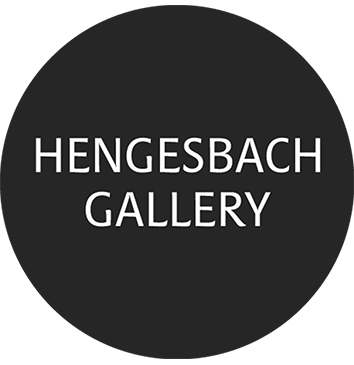ANTHONY MCDONALD
20 April – 26 June 2015
POESIE DER STILLE
Had we been asked one hundred and fifty years ago to illustrate the concept of an “image,” we would likely have answered: it is a painted surface on which people or objects or landscapes are depicted and which is fitted with a frame. Were we asked the same question today, some of us might say: it is a framed, colored surface; others might respond: it is a bordered surface on which something continuously changes (screen flicker). Anthony McDonald’s images seem at first to proceed from both notions, yet they subtly undermine them. To the image as a flickering phenomenon, McDonald’s paintings oppose reduction and simplicity; to the image as a colored surface with a focus on the center, they oppose the image edge as a decentered focus.
McDonald takes up the simple material conditions of a painted picture. Typically, this consists of a canvas stretched over a frame. The image is then often placed in an external frame, which serves both as protection and decorative enhancement. In McDonald’s work, the outer frame becomes part of the painting itself, as he translates the various decorative possibilities of wooden frames into painting on the image surface. The edges of his paintings consist of numerous overlapping layers of different colors, which shimmer through at the borders or contours of the different strips. In these layers, he lends the paint a pastose, thick quality.
However, McDonald does not simply copy existing models: each of the four edges of the image is painted differently, though this is not immediately noticeable. Only gradually does one realize that a subtle conversation is taking place between the four sides. This conversation is one of the painting process itself: for example, if he applies a color at the top edge, the right edge may respond, followed by the left edge, which in turn leads to another painterly change at the top—so that the act of painting becomes a round dance with several repetitions, until it becomes a polyphonic concert to which the image’s center responds as a calming harmony of sounds.
McDonald gives the image surface a physical volume through a box-like support structure and continues the painted surface around the edges, making the lateral edges part of the artwork and increasing the number of voices in the concert of color strips. This subtly disrupts our visual habits, since we are accustomed to drawing representational content from the central front surface, perceiving the frame as something separate, and not needing to look around the corner. McDonald instead reverses our expectations regarding the image surface as a source of information or clarity, implicitly prescribing a contemplation of the stillness at the image’s center and of the tonal richness found in the subtle nuances along the front and side edges.
If we focus on the impasto-like texture of the sculptural image edges, they evoke on one hand the delicacy of wood carving, while at the same time transforming the static structure of the picture frame into an organic process of swelling and receding. In doing so, McDonald virtually inverts the components of the image. The rigid, geometric image edge—the stretcher frame for the canvas—becomes an organic form, prompting the involuntary question: can these images breathe from their edges?
Painting makes visual events visible in an instant. This stands in direct contrast to the genesis of a painted image, which is a time capsule for a multitude of painterly actions, coordinated over time into a complex narrative that leads to a final result. McDonald’s paintings radicalize this paradox. They reduce the visual events of the painting to basic structural components: surface and frame, nothing more. And yet, his paintings only begin to reveal their visuality once we start to perceive the subtle transitions, layers, stripes, underpaintings, and reversals within the materiality of the paint—when we can feel the concert of the four edges as the breath of the paintings.
McDonald’s paintings invert the static framework of a painting into narratives about events in the materiality of color—its turns and shifts. In these events, something of the human’s organic emotionality emerges, so that these paintings, which seem at first to have retreated analytically into the purely pictorial, still tell us much about a meditation on ourselves—through a poetry that first demands a stillness at its center in order to let us hear our own heartbeat.
One might, due to their initially austere abstraction, view McDonald’s paintings as a typical phenomenon of modern art. But such a shift already occurred earlier in art, when gradually the edges of a structured surface began to separate out and become an independent element—and the entire spirituality once attributed to the surface and its cohesion was transferred to the edges. Centuries later, people asked how a rigid system of joints and supports—ever more adorned—could express an organic, mystical spirituality. It took a long time to understand that this ornate frame, in its striving toward the heavens, allowed otherworldly light to become visible. I’m speaking of architecture and the transition from Romanesque to Gothic, of how the Goths were long seen as barbarians and Gothic architecture considered barbaric. Does not something of the Gothic impulse to spiritualize the frame emerge in McDonald’s paintings?
Installation Views

